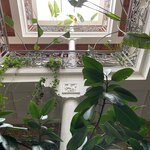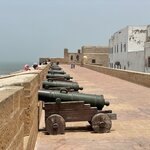Highlights
- Discover souks and tanneries in medieval Fes
- Explore sand dunes, oases, hidden valleys, and old kasbahs in the desert
- Wander spice markets and visit local artisan workshops in Marrakesh
- Climb ramparts overlooking the Atlantic and taste fresh seafood in Essaouira
Brief Itinerary
| Day | Highlights | Overnight |
|---|---|---|
| Day 1 | Arrive in Casablanca | Casablanca |
| Day 2 | Transfer to Fes via the Roman Ruins at Volubilis & Meknes | Fes |
| Day 3 | Fes: Explore the Imperial City & Medieval Medina | Fes |
| Day 4 | Into the Desert: Transfer to Merzouga via the High Atlas | Erg Chebbi |
| Day 5 | Transfer to Ouarzazate via Desert Towns & Todra Gorge | Ouarzazate |
| Day 6 | Transfer to Marrakesh via Aït Benhaddou & Tizi n'Tichka Pass | Marrakesh |
| Day 7 | Explore the "Red City" of Marrakesh | Marrakesh |
| Day 8 | Transfer to Essaouira: Seaside Ramparts & Fresh Seafood | Essaouira |
| Day 9 | Return to Casablanca via Scenic Stops Along the Coast | Casablanca |
| Day 10 | Depart Casablanca |
Detailed Itinerary
Arrive in Casablanca

Welcome to Morocco's west coast! The largest city in Morocco, Casablanca is a modern city with major French influence. For an architectural treat, start your explorations with a visit to the popular Hassan II Mosque and admire its exquisite craftsmanship. Sitting pretty on an outcrop over the Atlantic Ocean, the Hassan II Mosque is estimated to house 25,000 worshippers inside, with additional room for 80,000 in its courtyard. Unique to Morocco, Hassan II is one of few mosques where non-Muslims are permitted to enter. Feast your eyes on the intricate marblework, wood and stone carving, and gilded cedar ceilings.
Explore Parc de la Ligue Arabe and check out the Casablanca Cathedral (no longer in use) for a fine example of mid-19th-century Mauresque architecture (a mix of European Art Deco and Moorish styles). Visit the Old Medina (old quarter), the only part of the city pre-dating the French protectorate, before touring the Hobous, or the "New Medina." Built in the 1930s by the French, Hobous is a great place to seek out the olive, vegetable, and spice markets, as well as admire more examples of Mauresque buildings. Don't miss a stroll along the Boulevard de la Corniche, often referred to as the "Miami of Morocco."
Day 2: Transfer to Fes via the Roman Ruins at Volubilis & Meknes

Meet your driver this morning and head three hours northeast toward Fes. Along the way, stop and stretch your legs to explore Meknes. A smaller version of Fes, Meknes offers a calmer medina, and shopkeepers are not as pushy to make a sale. While Meknes is quite large, the two main areas of interest are the Ville Impériale (Imperial City) and the manageable medina. Be sure to check out the grand Bab al-Mansour gate and the Mausoleum of Moulay Ismail. Next, visit the Roman ruins of Volubilis. Founded in the third century BCE, it remains incredibly well-preserved as a UNESCO-protected site.
Carry on eastward to Fes. Before venturing into the medina, take the time to complete a short trek up a hill to the ruins of the Merenid Tombs for an all-encompassing view of the medieval city. The best time to visit the tombs is around dusk. The muezzin's calls to worship can be heard through the valley as the city lights begin to glow, adding to the atmosphere. Continue to your traditional riad (a traditional townhouse with a central courtyard) for a warm meal and settle in for the evening.
Day 3: Fes: Explore the Imperial City & Medieval Medina

The oldest of the Imperial Cities of Morocco and perhaps the most interesting and exciting to explore, Fes has undergone little colonial development adding to its medieval appeal. Home to the most complete medina in the Arab world and a UNESCO World Heritage site, Fes is made up of three main points of interest: Fes el Bali (old Fes, the medina, and where you will spend most of your time), Fes el Jdid (new Fes), and the French-influenced Ville Nouvelle. Meet your guide to learning more about the history and culture of Fes and, most importantly, to help you navigate the medina.
Begin your tour in Fes el Bali, starting at the Bab Boujloud (Blue Gate) that welcomes you onto Talâa Kebira. Discover the wares for sale in the souks (markets) and shops as you pass the Spanish and Tunisian-influenced architecture. One of the most unique sights in the old medina is the tanneries, and Chouara Tannery is no exception. Climb to the rooftop of a nearby leather shop for a better view of the 11th-century stone pots filled with dye and men working. Follow your guide to Al-Qarawiyyin Library and Mosque (859 CE). If you're lucky, you may be able to sneak a peek inside the library.
Day 4: Into the Desert: Transfer to Merzoud via the High Atlas

You'll be covering a lot of ground today as you transfer south toward your final destination outside the desert town of Merzouga. The drive takes around seven hours, but you'll break up the trip with plenty of stops. Ascend the Middle Atlas mountains through fragrant cedar forests and over the Col du Zad pass. Stop and stretch your legs in the "Apple City" of Midelt—known for its fruit orchards—and lunch near the Moulouya River. Continue to the palm forests of the Ziz Valley by way of the Tizi n'Talremt pass, noting the many fortified ksars that merchants built to protect and stock their precious goods of gold, salt, and spices.
Reach Erfoud, known for dates and fossils, and stop at a local artisan collective to learn everything there is to know about the types of fossils found in the area. Next, you'll head toward Erg Chebbi, the sea of sand, where some dunes are more than 600 feet (183 m) tall. In Merzouga, meet your camel and hop aboard to trek to your evening's accommodation: a Bedouin-style tent. Race to the top of a nearby sand dune to watch the desert sunset over the dunes before returning to your site for dinner and a campfire under the starry night sky.
Chat with a local specialist who can help organize your trip.
Day 5: Transfer to Ouarzazate via Desert Towns & Todra Gorge

Catch the sunrise before renting a sandboard to test your skills on the dunes. Then it's time to get back on the road for the five-hour transfer to Ouarzazate. Stop along the way in Khemliya to experience a traditional Saharan village, then continue west to pass through a dramatic gate into Rissani. This market town holds a livestock auction and is home to a "donkey parking lot," a site worth experiencing (and hearing)! Make your way to the desert town of Tinghir before reaching the 984-foot (300 m) deep Todra Gorge. You will have time to explore the gorge and relax in the cool water of the shallow Todra River.
Travel through the Valley of a Thousand Kasbahs. Though many kasbahs (old fortresses or fortifications) are now in disrepair, local families still live in some of them. You may even come across nomads herding their animals. Head west to Kelâat M'Gouna. Known for its Festival des Roses, here you can see extensively cultivated farmland bordered with fragrant rose bushes. Continue west to settle for the evening in Ouarzazate, a gateway to the Sahara Desert made popular by the film industry. Join a studio tour and discover how the nearby desert landscapes have been featured in many films.
Day 6: Transfer to Marrakesh via Aït Benhaddou & Tizi n'Tichka Pass

Start this morning's 3.5-hour drive with a visit to nearby Aït Benhaddou, a UNESCO World Heritage site believed to date from the 11th century, when it held an important position along the trans-Saharan trade route between Marrakesh, Ouarzazate, and the southern desert. Follow the narrow streets up to the Granary for a view of the surrounding landscapes. From there, ascend the High Atlas mountain range and look out for the highest peak, Mount Toubkal (13,671 ft/ 4,167 m). Stop near the top of the Tizi n'Tichka pass (7,415 ft/ 2,260 m) to enjoy the views over the mountain range.
As you descend the High Atlas, you'll notice a dramatic change in the climate and landscape. Soon you'll be a part of the noise and clamor of Marrakesh. After a long day on the road, settle into your hotel and spend the rest of the afternoon as you like. In the early evening, the main square—and busiest square in all of Africa—Jemaa el-Fna, comes alive with musicians, performers, snake charmers, games, and food stalls, a catch-all of entertainment. If you want to enjoy the spectacle from a distance, choose one of the many cafés surrounding the square and enjoy a cup of mint tea and a meal.
Day 7: Explore the "Red City" of Marrakesh

Nicknamed the "Red City" for its 1,000-year-old red sandstone city walls and buildings, Marrakesh is a major economic center. Begin your day exploring the 12th-century Koutoubia Mosque and take a respite from the heat in its gardens amid fountains and palms. Indulge your senses and explore the spice market, Souk el-Attarin, or browse Souk Smata for your choice of slippers, rugs, and leather goods. Next, visit the Islamic school, Ben Youssef Madrasa, for a taste of 16th-century architecture and marvel at the exquisite details: arabesques, Islamic calligraphy, and colorful geometric tilework.
As you walk Marrakesh's alleys, notice the fondouks or caravanserai—medieval inns along ancient trade routes that provided travelers and traders with shelter and supplies. Depending on the timing and your energy level, you may wish to visit a few sites south of Jemaa el-Fna. Some options to consider are the 500-year-old Saadian Tombs, the extensive courtyard and sunken gardens of the 17th-century El Badi Palace, or the intricate woodwork and painted ceilings of the 19th-century Bahia Palace. Return to Jemma el-Fna for a bite to eat before retiring to your accommodation for the evening.
Day 8: Transfer to Essaouira: Seaside Ramparts & Fresh Seafood

After breakfast, join your driver for the three-hour transfer west to the Atlantic coast and to the laid-back beach town of Essaouira. Your route will take you over extensive rolling plains and through endemic argan forests. If you're lucky, you may see goats in the trees grazing on the argan fruit, a sight seen when grass pasture is limited or unavailable. Along the way, there is an option to stop at an Argan Oil Cooperative to see how the precious and expensive oil is extracted from the nut.
Arrive in the port city of charming Essaouira, a nice contrast to frenetic Marrakesh, and spend the rest of the day as you choose. Walk the Skala de la Kasbah (the 18th-century seafront ramparts) along the coast. Designed by European engineers, old brass cannons line the walls and offer views over the Atlantic. Explore the UNESCO-protected medina before making your way to the windswept beach. Jimi Hendrix fans may want to take a short taxi ride to Diabat at the end of Essaouira's beach, where he reportedly spent some time. Walk back to Essaouira and enjoy a meal of freshly caught seafood.
Day 9: Return to Casablanca via Scenic Stops Along the Coast

Known as the "Windy City" for the strong alizée trade winds that hit its crescent beach, Essaouira is a popular kiteboarding destination. Take the morning to watch the windsurfers and kiteboarders, or, for the more adventurous, take a lesson before saying goodbye and returning to Casablanca. There will be the option to break up the four to five-hour coastal drive with plenty of stops in charming seaside towns along the way.
Upon arriving in Casablanca, explore more of the Old Medina, bargain with local vendors in the bazaar, and pick up any last-minute souvenirs and gifts.
Day 10: Depart Casablanca

Depending on your departure details, you may wish to stroll along the Boulevard de la Corniche to Rick's Café, a bar, restaurant, and café influenced by the movie classic, "Casablanca," and grab a bite to eat. When the time comes, your driver will take you to the airport to catch your departing flight. Safe travels!
More Great Morocco Itineraries
Looking for more inspiration for your trip to Morocco? Check out these other Morocco itineraries, explore different ways to spend 10 days in Morocco, or discover the best time to visit Morocco.








